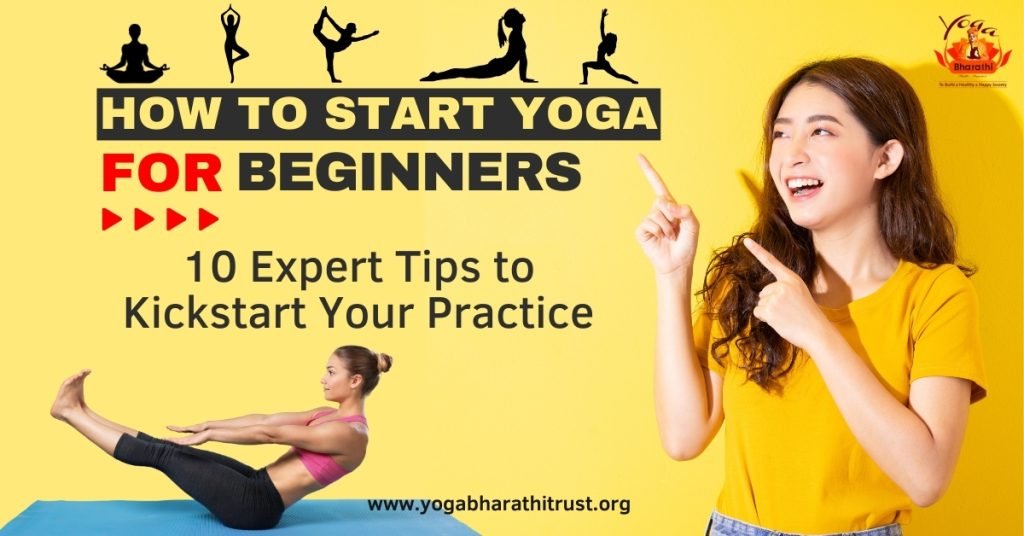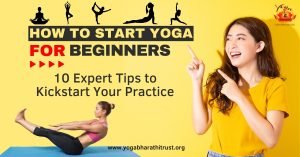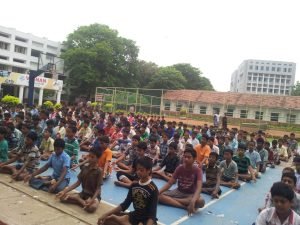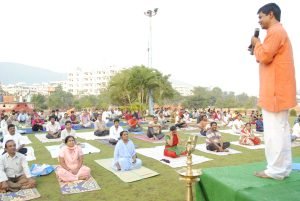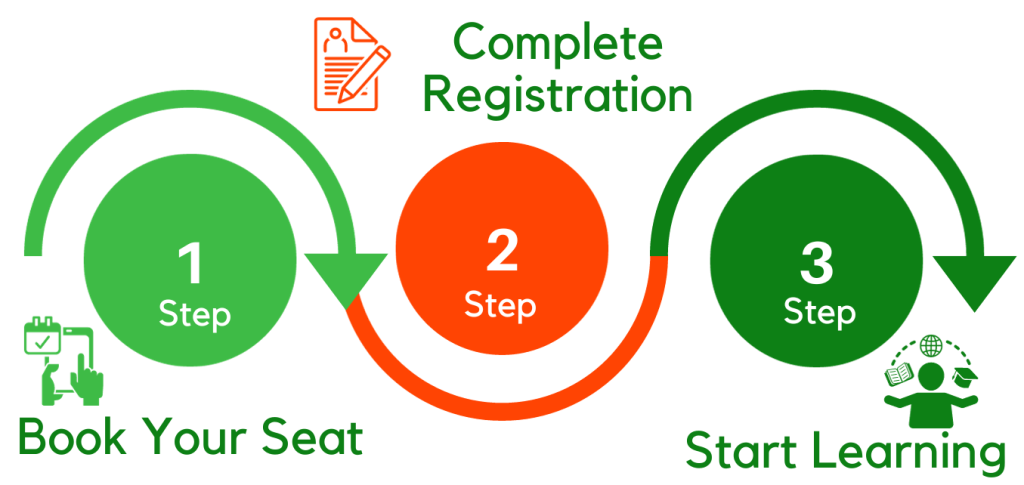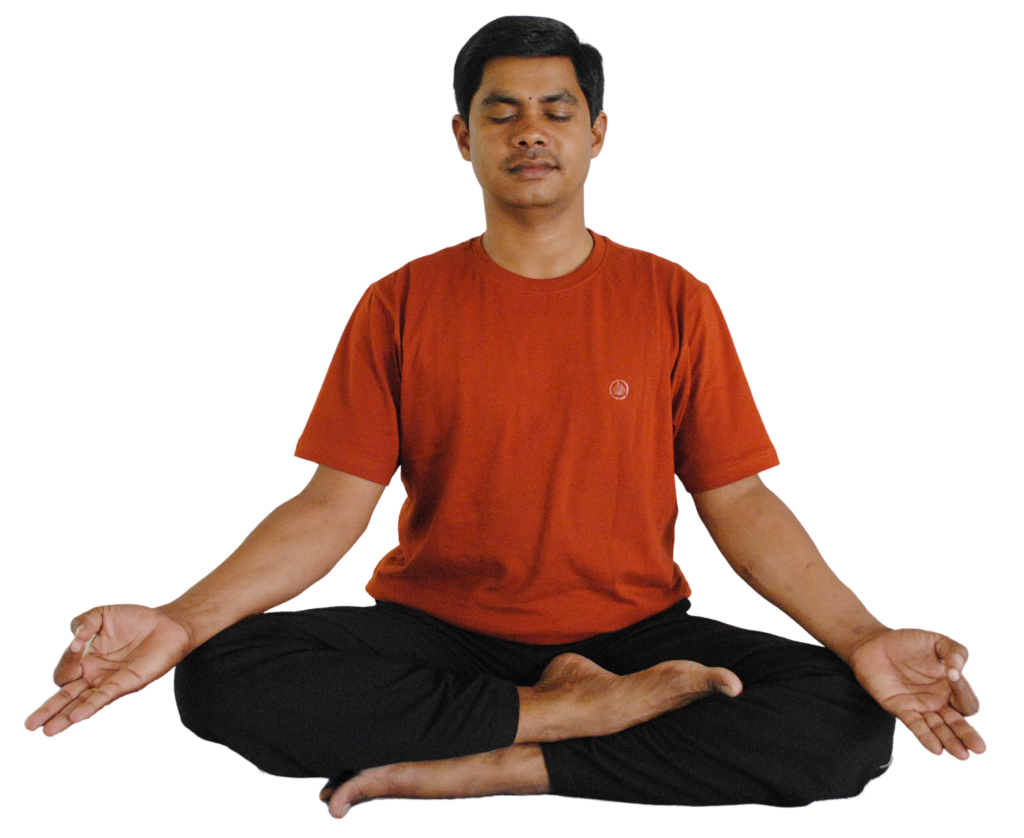How to Start Yoga For Beginners | 10 Expert Tips to Kickstart Your Practice | Yoga Bharathi Trust | Yoga Training Center:
Welcome to your journey into the transformative world of yoga! Starting yoga can be both exciting and a bit overwhelming, but with the right guidance, you can lay a strong foundation for a fulfilling practice. Whether you’re looking to improve flexibility, reduce stress, or find a deeper connection with yourself, yoga offers a holistic approach to wellness that benefits both body and mind.
Yoga is more than just physical exercise; it’s a way to cultivate a balanced lifestyle. With consistent practice, you can experience profound changes in your physical health, mental clarity, and emotional well-being. The following expert tips are designed to help you kickstart your yoga practice effectively, ensuring you get the most out of each session.
In this guide, we’ll cover essential aspects such as setting realistic goals, choosing the right style of yoga, creating a comfortable practice space, and more. These tips will not only help you start your practice but also maintain it with enthusiasm and dedication.
Let’s begin this journey together, one breath at a time. Dive into the first tip and discover how to set realistic goals for your yoga practice.
1. Set Realistic Goals
Setting realistic goals is crucial when starting your yoga journey. Clear, achievable goals will keep you motivated and help you track your progress. Here are some steps and tips to set effective goals:
Start Small and Specific
- Begin with Simple Goals: Aim to practice yoga for 15-20 minutes, three times a week. As you become more comfortable, you can gradually increase the duration and frequency.
- Focus on Specific Areas: Identify specific areas you want to improve, such as flexibility, strength, or stress reduction. For example, “I want to touch my toes in three months” or “I aim to reduce my stress levels by practicing mindfulness through yoga.”
Use the SMART Criteria
Setting SMART (Specific, Measurable, Achievable, Relevant, Time-bound) goals can be particularly effective.
- Specific: Define what you want to achieve. E.g., “I want to master the Downward Dog pose.”
- Measurable: Track your progress. E.g., “I will practice Downward Dog for 5 minutes every day.”
- Achievable: Set goals that are challenging yet attainable. E.g., “I will learn to hold the pose for 30 seconds within a month.”
- Relevant: Ensure your goals align with your overall wellness objectives. E.g., “Improving my posture through yoga.”
- Time-bound: Set a deadline to achieve your goal. E.g., “By the end of the month.”
Regularly Review and Adjust Goals
- Monitor Progress: Keep a yoga journal or use a tracking app to note your practice sessions, progress, and any challenges.
- Adjust as Needed: It’s okay to revise your goals based on your experience. If a goal feels too easy or too challenging, adjust it to stay motivated.
Stay Flexible and Compassionate
- Be Kind to Yourself: Yoga is a personal journey. If you miss a session or struggle with a pose, avoid self-criticism. Celebrate your efforts and progress, no matter how small.
- Adapt to Changes: Life can be unpredictable. If you’re unable to meet a goal due to unforeseen circumstances, adjust your plan and continue your practice without guilt.
Setting realistic goals is the first step in making yoga a sustainable part of your lifestyle. These goals will guide your practice and help you stay committed to your journey.
2. Choose the Right Style of Yoga
Choosing the right style of yoga is essential to ensure you enjoy and benefit from your practice. Different styles of yoga offer various benefits and cater to different needs. Here are some popular styles of yoga and tips on how to choose the one that’s right for you:
Popular Yoga Styles
- Hatha Yoga: Ideal for beginners, Hatha Yoga focuses on basic poses and breathing techniques. It’s a slower-paced practice that helps build a solid foundation.
- Vinyasa Yoga: Known for its flowing sequences and dynamic movement, Vinyasa Yoga is great for those looking for a more energetic practice.
- Ashtanga Yoga: A more rigorous style that follows a specific sequence of poses. It’s perfect for those who enjoy structure and a physical challenge.
- Iyengar Yoga: Emphasizes precision and alignment, often using props like blocks and straps. Ideal for individuals seeking to improve posture and body mechanics.
- Restorative Yoga: Focuses on relaxation and stress relief through gentle poses held for longer durations. Great for winding down and finding inner peace.
Tips for Choosing the Right Style
- Assess Your Goals: Determine what you want to achieve with yoga. Are you looking to build strength, improve flexibility, reduce stress, or find mental clarity? Your goals can guide your choice.
- Consider Your Fitness Level: If you’re new to exercise or have specific health concerns, start with a gentler style like Hatha or Restorative Yoga. If you’re more active, Vinyasa or Ashtanga might be a better fit.
- Try Different Classes: Experiment with various styles to see which one resonates with you. Many yoga studios and online platforms offer trial classes.
- Cultural Connection: As a resident of Andhra Pradesh, you might appreciate exploring yoga styles that incorporate traditional Indian practices and philosophies, enriching your cultural and spiritual experience.
Choosing the right style of yoga sets the tone for your practice. By selecting a style that aligns with your goals, fitness level, and cultural preferences, you’ll be more likely to enjoy and stick with your yoga journey.
3. Create a Comfortable Practice Space
Having a comfortable and inviting practice space is essential for maintaining a consistent yoga routine. A dedicated space helps you focus and enhances the overall experience of your practice.
Choose the Right Location
- Quiet and Calm: Select a quiet area in your home where you can practice without distractions. A calm environment will help you concentrate and relax.
- Adequate Space: Ensure there is enough room to move freely. You should be able to stretch your arms and legs without hitting anything.
- Natural Light: If possible, choose a spot with natural light. Sunlight can enhance your mood and make the space more welcoming.
Essential Elements
- Yoga Mat: Invest in a good quality yoga mat that provides enough cushioning and grip.
- Props: Keep props like blocks, straps, and bolsters handy. They can help you achieve proper alignment and make poses more accessible.
- Comfortable Temperature: Make sure the space is at a comfortable temperature. Use a fan or heater if needed to maintain a pleasant environment.
Personal Touches
- Aesthetics: Decorate your space with items that inspire peace and tranquility. This could include candles, plants, or a small altar with spiritual symbols.
- Music: Create a playlist of calming music or nature sounds to play during your practice. This can help set the tone and deepen your relaxation.
- Aroma: Use essential oils or incense to create a soothing atmosphere. Scents like lavender, sandalwood, or eucalyptus can enhance your practice.
Practical Tips
- Keep it Clean: A tidy space helps create a sense of order and calm. Regularly clean your practice area to keep it inviting.
- Minimal Distractions: Remove or turn off any potential distractions, such as phones or other electronic devices, during your practice time.
- Consistency: Try to practice in the same spot each day. This consistency can help train your mind and body to recognize the space as a place for yoga and relaxation.
Creating a comfortable practice space is about making a sanctuary where you can focus on your yoga journey. With the right environment, you’ll find it easier to maintain a regular practice and enjoy the full benefits of yoga.
4. Start with the Basics
Starting with the basics is essential for building a strong foundation in your yoga practice. These fundamental poses and techniques will help you develop proper alignment, strength, and flexibility. Here’s how to get started:
Learn Foundational Poses
- Mountain Pose (Tadasana): Stand tall with feet hip-width apart, grounding through the feet and lengthening the spine.
- Downward Facing Dog (Adho Mukha Svanasana): Begin on your hands and knees, lift your hips up and back, forming an inverted V shape.
- Child’s Pose (Balasana): Kneel on the mat, sit back on your heels, and then fold forward, extending your arms in front of you.
- Warrior I (Virabhadrasana I): Step one foot back, bend the front knee, and extend your arms overhead, reaching up towards the sky.
Focus on Alignment and Breath
- Alignment: Pay attention to proper alignment in each pose. Engage your core, lengthen your spine, and avoid locking your joints.
- Breath Awareness: Coordinate your movements with your breath. Inhale as you lengthen or expand, exhale as you fold or contract. This synchronicity helps create a meditative flow.
Practice Mindful Movement
- Move with Intention: Be mindful of every movement. Slow down and focus on the sensations in your body as you transition between poses.
- Listen to Your Body: Honor your body’s limits and avoid pushing yourself too hard. Modify poses as needed and respect any discomfort or pain.
Starting with the basics sets the stage for a fulfilling yoga practice. By mastering foundational poses and cultivating mindfulness, you lay the groundwork for growth and transformation on your yoga journey.
5. Use Props and Modifications
Using props and modifications in your yoga practice can enhance your experience and make poses more accessible. Props like blocks, straps, and bolsters provide support and assistance, allowing you to safely explore poses and deepen your practice. Here’s how to incorporate props and modifications effectively:
Understand the Purpose of Props
- Support: Props provide stability and support, especially for beginners or those with limited flexibility.
- Alignment: They help maintain proper alignment in poses, preventing strain or injury.
- Extension: Props can extend your reach and help you explore poses beyond your current range of motion.
Common Props and How to Use Them
- Yoga Blocks: Use blocks to bring the floor closer to you in standing poses or to provide support in seated poses.
- Yoga Straps: Straps help you reach and hold poses that require greater flexibility, such as forward bends or binds.
- Bolsters: Bolsters offer cushioning and comfort in restorative poses, allowing you to relax deeply into the posture.
- Blankets: Blankets can be folded or rolled to provide extra padding, support, or elevation in various poses.
Modify Poses to Suit Your Needs
- Simplify: Use props to simplify challenging poses, making them more accessible for your body.
- Adapt: Modify poses to accommodate injuries, physical limitations, or personal preferences.
- Customize: Experiment with different props and variations to find what works best for you in each pose.
Incorporating props and modifications into your practice can make yoga more inclusive and adaptable to individual needs. Whether you’re a beginner exploring basic poses or an experienced practitioner deepening your practice, props can support you on your yoga journey.
6. Focus on Your Breath
Breath awareness is a fundamental aspect of yoga practice, serving as a bridge between the body and the mind. By focusing on your breath, you can cultivate mindfulness, enhance relaxation, and deepen your connection to the present moment. Here’s how to integrate breath awareness into your practice:
Establish a Breath-Centric Mindset
- Begin with Awareness: Start each practice session by bringing your attention to your breath. Notice the natural rhythm of inhales and exhales.
- Conscious Breathing: Throughout your practice, maintain awareness of your breath. Coordinate your movements with your breath, allowing it to guide the pace and flow of your practice.
Practice Yogic Breathing Techniques
- Deep Belly Breathing (Diaphragmatic Breathing): Inhale deeply through your nose, allowing your belly to expand fully. Exhale slowly through your nose, drawing your belly in towards your spine.
- Ujjayi Breath (Victorious Breath): Constrict the back of your throat slightly as you breathe in and out through your nose, creating a soft, audible sound like ocean waves.
- Alternate Nostril Breathing (Nadi Shodhana): Use your thumb and ring finger to alternate closing off one nostril at a time as you inhale and exhale through each nostril.
Cultivate Breath-Movement Synchronization
- Flow with Breath: Coordinate your movements with your breath, inhaling to expand or lengthen and exhaling to contract or fold.
- Mindful Transitions: Pay attention to the spaces between poses, maintaining a steady and intentional breath even during transitions.
Harness the Power of Pranayama
- Pranayama Techniques: Explore various pranayama (breath control) techniques to deepen your breath awareness and enhance your practice.
- Balancing Energy: Pranayama practices can help balance the body’s energy channels (nadis) and quiet the mind, promoting a sense of equilibrium and inner peace.
Focusing on your breath allows you to cultivate a deeper awareness of your body and mind, fostering a sense of calm and presence on and off the mat.
7. Find a Qualified Instructor
Finding a qualified yoga instructor is essential for receiving proper guidance, support, and feedback on your practice. A knowledgeable teacher can help you refine your alignment, deepen your understanding of yoga philosophy, and provide personalized modifications to suit your needs. Here’s how to find the right instructor for you:
Research Credentials and Experience
- Certification: Look for instructors who have completed a reputable yoga teacher training program and hold a recognized certification.
- Experience: Consider the instructor’s years of teaching experience and any specialized training or areas of expertise.
Attend Classes and Workshops
- Trial Classes: Attend a variety of classes taught by different instructors to get a sense of their teaching style and approach.
- Workshops: Participate in workshops or special events led by experienced instructors to deepen your knowledge and skills.
Seek Recommendations and Reviews
- Word of Mouth: Ask friends, family, or fellow yogis for recommendations based on their experiences with different instructors.
- Online Reviews: Check online platforms or yoga studio websites for reviews and testimonials from students.
Assess Teaching Style and Philosophy
- Alignment Focus: Look for instructors who prioritize proper alignment and offer clear instructions for safe and effective practice.
- Mindfulness and Philosophy: Find an instructor whose teaching resonates with your personal values and spiritual beliefs.
Finding the right yoga instructor is a crucial step in your practice, so take your time to explore different options and trust your intuition when making your decision.
8. Listen to Your Body
Listening to your body is a foundational principle of yoga practice. Tuning in to your body’s signals allows you to practice safely, honor your limitations, and cultivate self-awareness. Here’s how to incorporate body awareness into your practice:
Practice Mindful Movement
- Body Scan: Start each practice by scanning your body from head to toe, noticing any areas of tension, discomfort, or tightness.
- Intention Setting: Set an intention to listen to your body and respond with compassion and self-care throughout your practice.
Honor Your Limits
- Modify Poses: Don’t hesitate to modify poses or use props to make them more accessible. Listen to your body’s feedback and adjust accordingly.
- Respect Pain: Avoid pushing yourself into painful or uncomfortable positions. Pain is your body’s way of signaling that something isn’t right.
Cultivate Awareness
- Breath Awareness: Use your breath as a guide, noticing how it changes with different movements and poses. Deep, steady breathing can help release tension and create space in the body.
- Sensations: Pay attention to sensations in your body, such as stretching, opening, or contracting. Notice how each movement feels and adjust as needed.
Practice Non-Judgment
- Release Expectations: Let go of any expectations or judgments about how your practice should look or feel. Instead, focus on accepting and embracing where you are in each moment.
- Self-Compassion: Be kind to yourself and acknowledge that your body’s needs may change from day to day. Practice gratitude for what your body can do, rather than focusing on limitations.
By listening to your body and responding with kindness and awareness, you can create a nurturing and sustainable yoga practice that supports your physical, mental, and emotional well-being.
9. Establish a Consistent Practice Routine
Consistency is key to reaping the full benefits of yoga. Establishing a regular practice routine helps you build strength, flexibility, and mindfulness over time. Here’s how to create and maintain a consistent yoga practice:
Set Realistic Goals
- Frequency: Decide how often you want to practice each week. Start with a realistic goal, such as three times a week, and gradually increase as you become more comfortable.
- Duration: Determine the length of your practice sessions based on your schedule and energy levels. Even short sessions of 15-20 minutes can be beneficial.
Create a Dedicated Space
- Designate a Space: Choose a quiet, clutter-free area in your home where you can practice without distractions. Make it inviting and conducive to relaxation.
- Gather Equipment: Keep your yoga mat, props, and any other accessories in your practice space for easy access.
Schedule Regular Sessions
- Consistent Timing: Establish a regular schedule for your yoga sessions. Whether it’s in the morning, during your lunch break, or in the evening, consistency is key.
- Set Reminders: Use alarms or calendar notifications to remind yourself of your scheduled practice times.
Be Flexible and Adaptive
- Adapt to Changes: Life can be unpredictable, so be prepared to adjust your practice schedule as needed. If you miss a session, don’t be too hard on yourself. Simply resume your routine when you can.
- Modify Intensity: Be flexible with the intensity and duration of your practice based on how you’re feeling physically and mentally.
Find Accountability Partners
- Practice with Others: Consider joining a yoga class or finding a practice buddy to help keep you accountable.
- Share Goals: Communicate your practice goals with friends or family members who can provide support and encouragement.
Celebrate Milestones
- Acknowledge Progress: Celebrate your achievements and milestones along the way. Whether it’s mastering a challenging pose or maintaining a consistent practice for a month, take time to acknowledge your efforts.
By establishing a consistent practice routine, you’ll gradually build strength, flexibility, and mindfulness, ultimately transforming your yoga journey into a sustainable and rewarding lifelong practice.
10. Embrace the Mind-Body Connection
Yoga is not just a physical practice; it’s a holistic discipline that fosters harmony between the mind, body, and spirit. Embracing the mind-body connection is essential for experiencing the full transformative power of yoga. Here’s how to deepen your connection:
Cultivate Presence and Awareness
- Mindful Practice: Approach your yoga practice with a sense of presence and awareness. Let go of distractions and fully immerse yourself in each moment.
- Body Sensations: Pay attention to the sensations in your body as you move through different poses. Notice areas of tension, release, and relaxation.
Practice Self-Compassion and Acceptance
- Non-Judgment: Practice yoga with an attitude of non-judgment and self-compassion. Accept yourself exactly as you are in each moment, without striving for perfection.
- Self-Kindness: Treat yourself with kindness and understanding, especially during challenging poses or moments of discomfort.
Cultivate Gratitude and Intention
- Gratitude Practice: Cultivate gratitude for your body’s abilities and the opportunity to practice yoga. Express appreciation for the support and nourishment your body provides.
- Setting Intentions: Set positive intentions for your practice, whether it’s cultivating inner peace, building strength, or finding balance.
Explore Meditation and Breathwork
- Meditative Practices: Incorporate meditation and breathwork (pranayama) into your practice to quiet the mind and deepen your connection to the present moment.
- Breath Awareness: Use your breath as a focal point for meditation, observing its rhythm and flow as you cultivate a sense of inner calm.
Connect with Your Inner Wisdom
- Inner Guidance: Trust your intuition and inner wisdom as you move through your practice. Listen to the subtle messages of your body and honor its needs.
By embracing the mind-body connection in your yoga practice, you’ll cultivate a deeper sense of self-awareness, resilience, and inner peace.
Conclusion
Starting your yoga journey is a transformative experience. By following these essential tips, you’ll embark on your practice with confidence. Remember to set realistic goals, find the right instructor, and embrace mindfulness. Celebrate each step of your journey, knowing that yoga brings balance, strength, and inner peace. Namaste.

